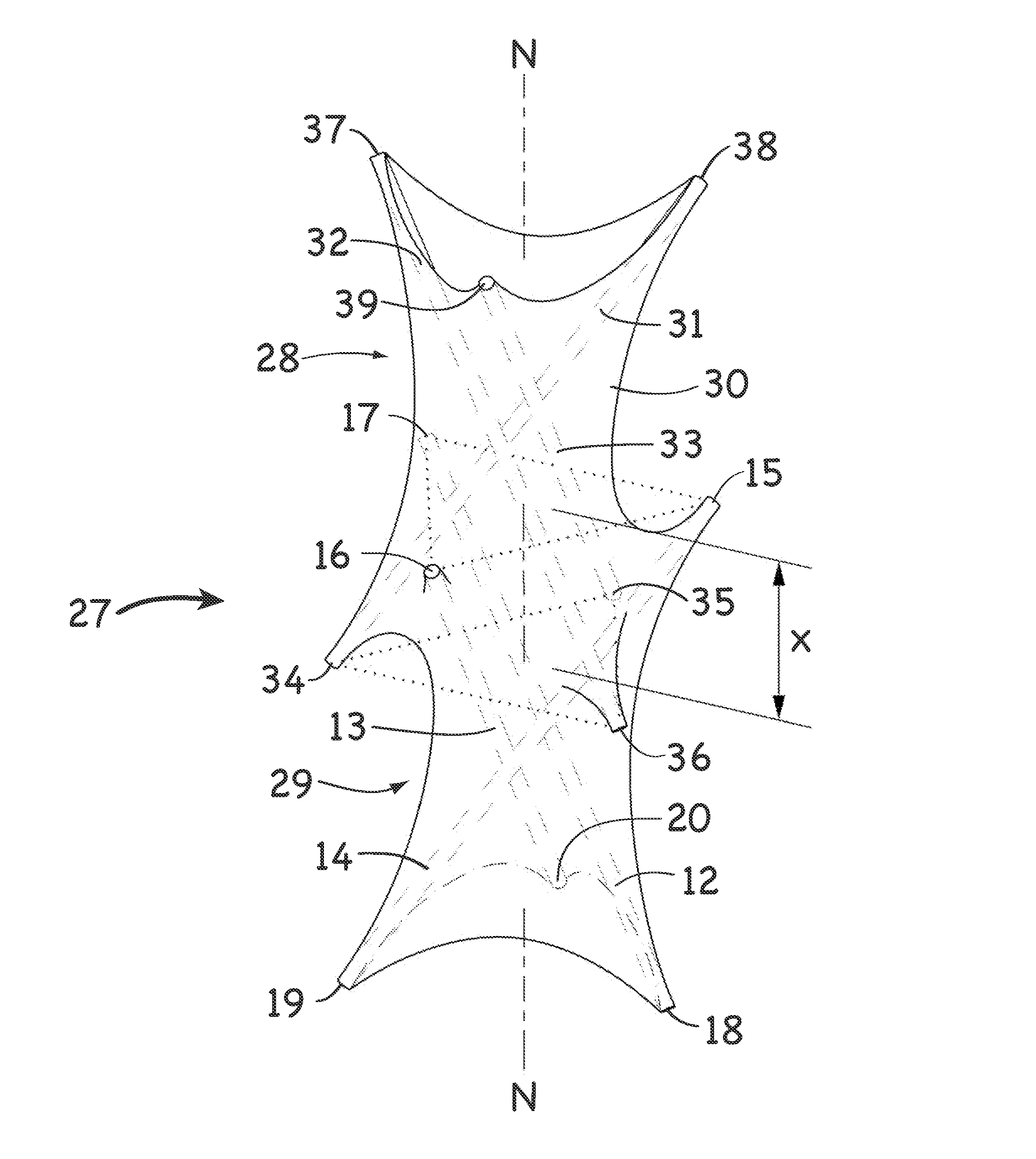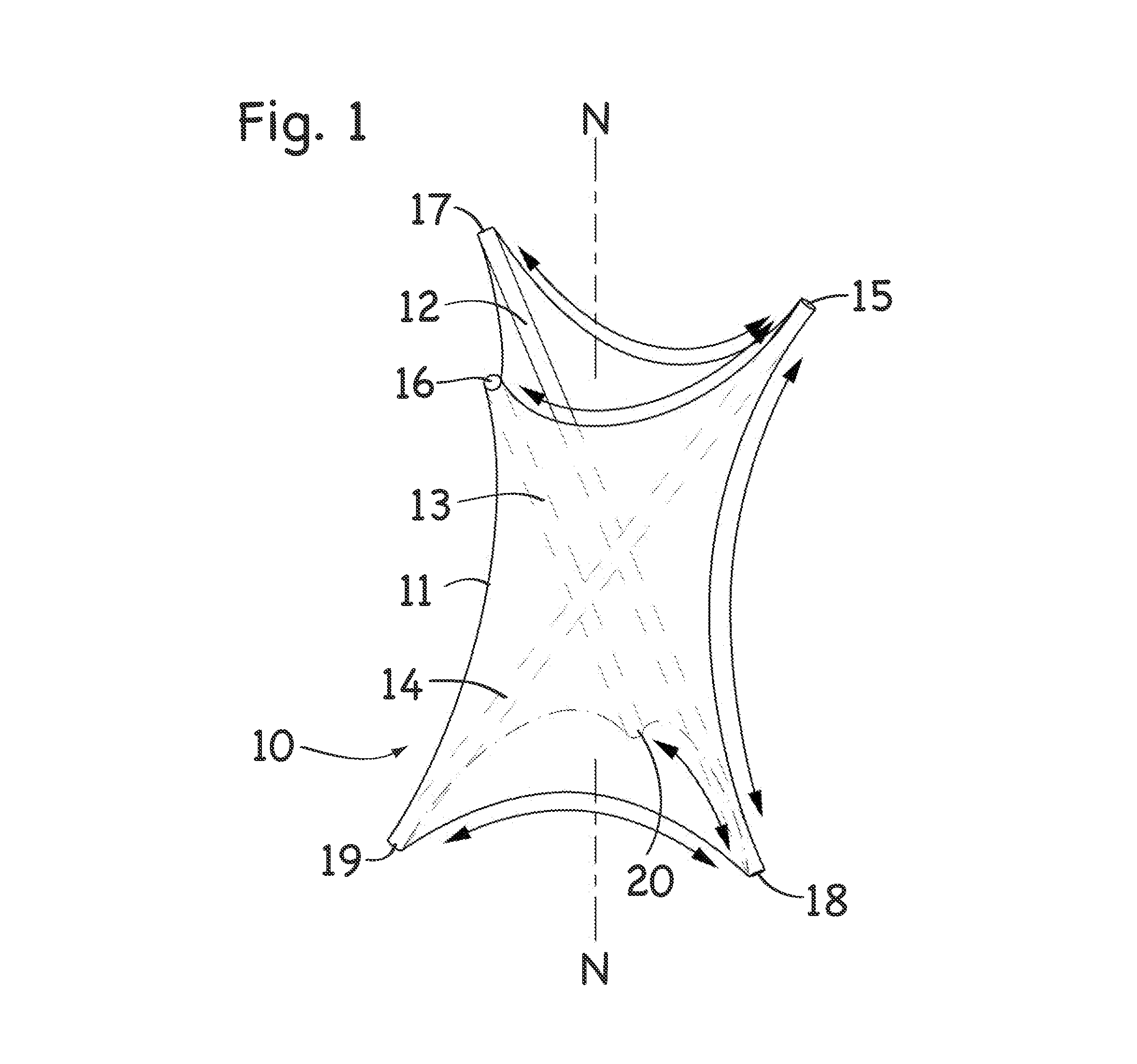Continuous tension, discontinuous compression systems and methods
a compression system and discontinuous technology, applied in the direction of buildings, constructions, buildings, etc., can solve the problems of reducing the slenderness ratio, significantly less flexibility, and substantial gaps between adjacent panels and between panels and compression members, so as to improve the volume-to-weight and volume-to-surface ratios
- Summary
- Abstract
- Description
- Claims
- Application Information
AI Technical Summary
Benefits of technology
Problems solved by technology
Method used
Image
Examples
Embodiment Construction
[0050]The tensegrity structures and methods disclosed herein can pursue numerous embodiments within the scope of the invention. However, to ensure that one skilled in the art will be able to understand and, in appropriate cases, practice the invention, certain preferred embodiments of the broader invention revealed herein are described below and shown in the accompanying drawing figures.
[0051]The present invention was made in view of the present inventor's discovery that a continuous membrane can replace the network of linear tension members as a structural component for a particular class of continuous tension, discontinuous compression structures. Under embodiments of the present invention, for example, a continuous pre-stressed membrane can be combined with repetitive, overlapping, and interweaving arrangements of discontinuous compression members to create tubular structures of variable length. The structures and methods disclosed herein substitute a continuous surface for the o...
PUM
 Login to View More
Login to View More Abstract
Description
Claims
Application Information
 Login to View More
Login to View More - R&D
- Intellectual Property
- Life Sciences
- Materials
- Tech Scout
- Unparalleled Data Quality
- Higher Quality Content
- 60% Fewer Hallucinations
Browse by: Latest US Patents, China's latest patents, Technical Efficacy Thesaurus, Application Domain, Technology Topic, Popular Technical Reports.
© 2025 PatSnap. All rights reserved.Legal|Privacy policy|Modern Slavery Act Transparency Statement|Sitemap|About US| Contact US: help@patsnap.com



